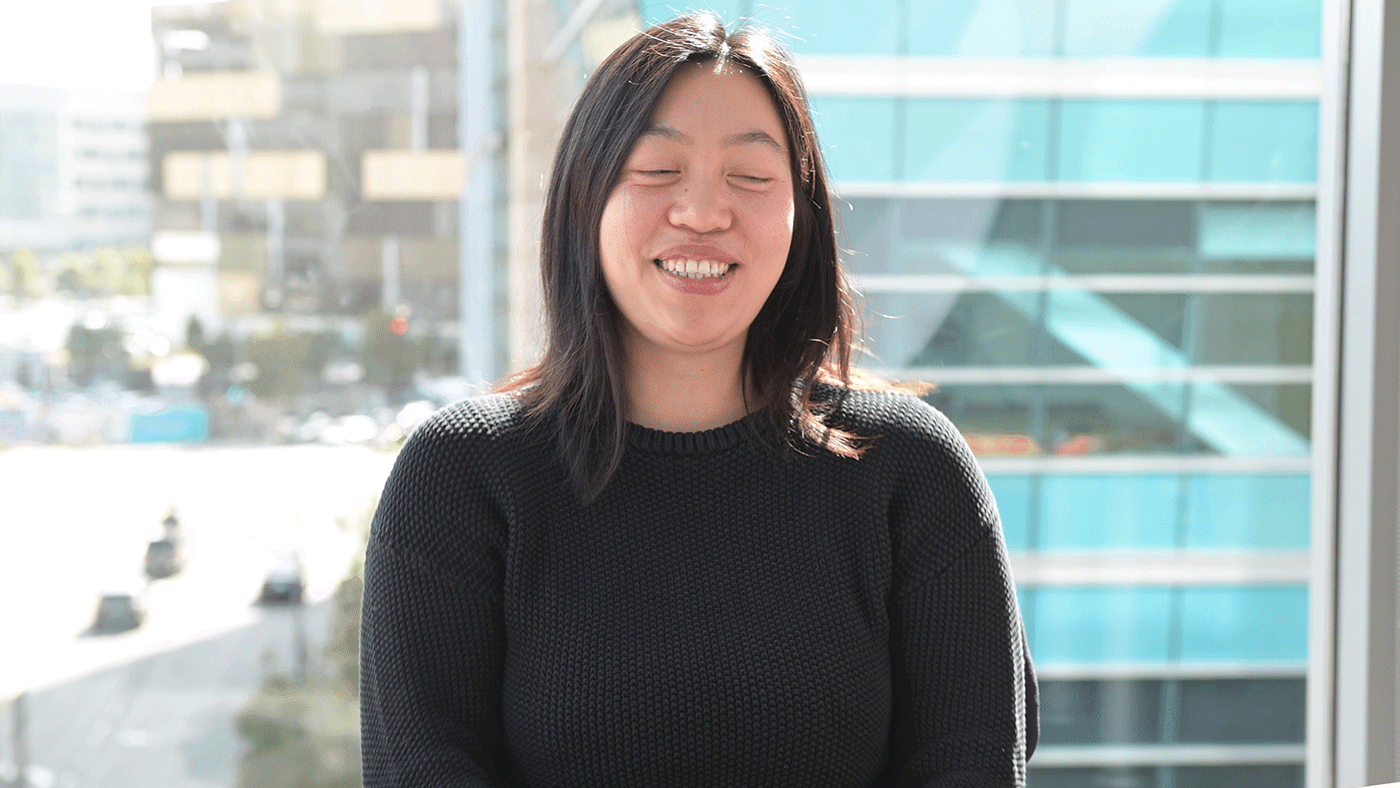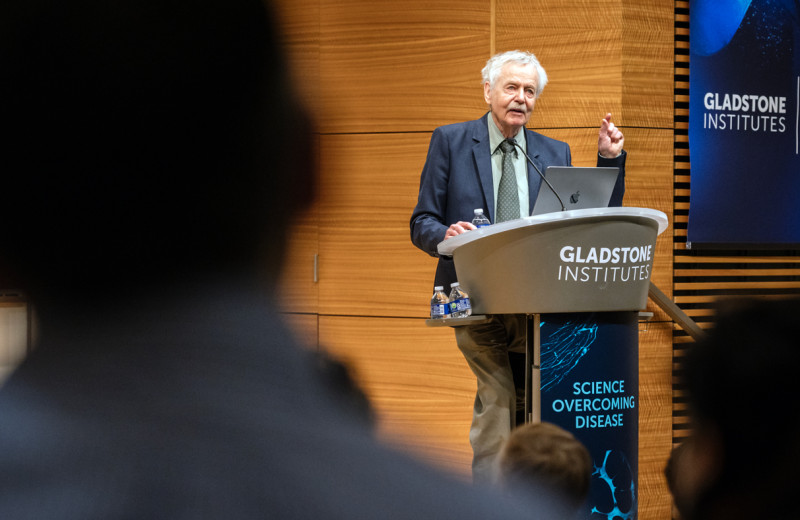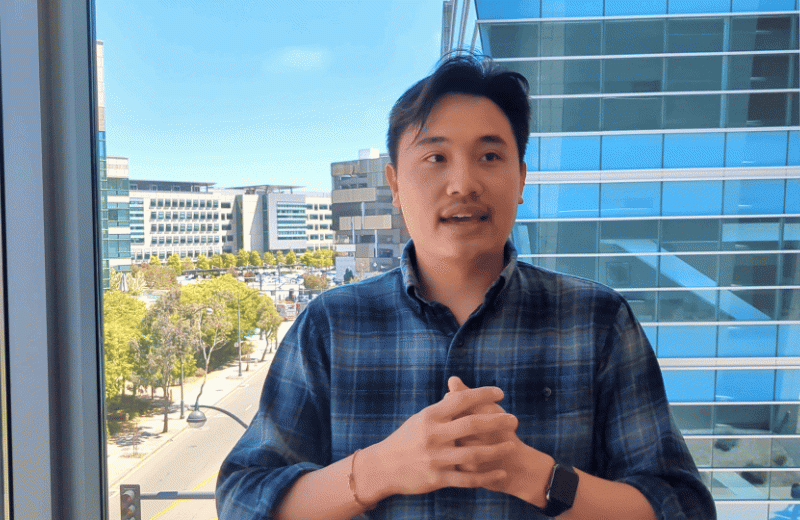Gladstone NOW: The Campaign Join Us on the Journey✕

Meet Ada Zhu, a research associate in the Alexanian Lab, whose passion for heart disease research is driven by personal experience and fueled by Gladstone’s collaborative community.
Ada Zhu is a research associate in Michael Alexanian’s lab. She’s a native San Franciscan and first generation college student, who studied molecular, cell, and developmental biology at the University of California, Los Angeles. She returned to the San Francisco Bay Area after graduating and joined the newly launched Alexanian Lab in 2022.
Earlier this year, Zhu received Gladstone’s Award of Excellence in the Cardiovascular Disease category for her unwavering passion for science, rapid mastery of research techniques, and commitment to collaboration, embodying Gladstone’s core values.
What brought you to Gladstone?
After undergrad, I wanted to obtain more experience in a wet lab setting to better understand if scientific research is a career I want to pursue. Being from the Bay Area, I knew that there are many world renowned research institutes and biotech companies in the area. So my job search led me to apply to the newly formed Alexanian Lab here at Gladstone.
What are the key areas of research you’re focused on?
The key area of my research is to understand how fibroblasts, the cells that form scar tissue when injury occurs, become activated in heart disease. My main focus is to uncover the genes involved in fibroblast activation and, specifically, the portion of the genome that turns on and off the activated fibroblast genes.
What drives you in your research?
Heart failure is associated with high rates of morbidity and mortality, affecting many people worldwide, including family members of mine. I’ve seen firsthand how heart disease associated with old age or diseases can negatively impact the daily lives of patients, as well as those around them.
I want to be able to help these patients live and enjoy a better life with their friends and family. This is what motivates me to continue pushing my research, especially when I face challenges or setbacks.
What do you like about Gladstone?
I really love the community at Gladstone, as it fosters a very collaborative and supportive environment to pursue science. All the interactions I’ve had here fall in line with Gladstone’s mission statement. People are very motivated to do science that benefits those with a wide range of diseases, as well as to help young researchers grow their skill sets and—most importantly—their scientific mindset to be able to further answer difficult questions.
I’ve experienced this firsthand during my time at Gladstone. The support and guidance I’ve gotten from my mentor, other lab members, and the organization as a whole has really allowed me to develop as a researcher who is excited and able (although still continuously learning) to lead my own projects.
How do you collaborate with other researchers, both within Gladstone and externally?
Gladstone provides an amazing environment for collaboration. Within Gladstone, researchers are willing to help each other from start to finish of any project. There’s such a wide range of expertise that I’m able to get assistance and learn different techniques needed to help answer the questions I’m trying to ask. Everyone at Gladstone is very open to sharing equipment, as well as to providing insight and feedback on how to approach a scientific question, set up an experiment, and analyze data.
Researchers at Gladstone are also very willing to share their connections. When a problem arises that may not be able to be entirely solved within Gladstone, someone knows of other experts around the world who could better help solve the problem at hand. A lot of the time, these branched connections then turn into new collaborations between labs, further benefiting the science everyone is pursuing.
What has been your biggest influence in your scientific career?
When I was in undergrad, I took many classes about gene expression and gene regulation. What intrigued me was that all the cells in a single individual have the same genetic makeup, but the way different genes are turned on or off will determine the fate of each cell, ultimately creating all the different types of cells that make us up.
What do you do when you’re not working?
When I’m not working, I like trying out new cafes, bakeries, and restaurants in the Bay Area with my friends and family. I also enjoy watching movies, and when I want to be outdoors, exploring walking trails and hikes.
What advice would you give to young scientists or students interested in your field?
The biggest advice I would give to students interested in science is to try it out. Don’t be afraid to reach out to investigators, teachers, graduate students, research technicians, or anyone else doing research that intrigues you. Ask them about their science and learn more about the topic.
Seek out opportunities, such as classes in school or internships, that would allow you to get exposure and some firsthand experience actually doing research. Being able to be in the lab environment can provide important insights into whether the topic of research—or even if research itself—is something you want to further pursue.
Want to Join the Team?
Our people are our most important asset. We offer a wide array of career opportunities both in our administrative offices and in our labs.
Explore CareersA Sculptor of Modern Regenerative Medicine
A Sculptor of Modern Regenerative Medicine
Among his myriad accomplishments, Rudolf Jaenisch—winner of the 2025 Ogawa-Yamanaka Stem Cell Prize—was the first to demonstrate the potential of induced pluripotent stem cells to treat disease.
Awards Ogawa Stem Cell Prize Profile Regenerative Medicine Stem Cells/iPSCsMeet Gladstone: Shijie Wang
Meet Gladstone: Shijie Wang
Shijie Wang, a postdoctoral scholar in Steve Finkbeiner’s lab, uses artificial intelligence, robotics, and stem cell technologies to uncover how brain cells die in neurodegenerative diseases like Alzheimer’s and Parkinson’s.
Profile Neurological Disease Finkbeiner Lab AI Robotic MicroscopyMeet Gladstone: Oscar Yip
Meet Gladstone: Oscar Yip
Oscar Yip is advancing Alzheimer’s research in Yadong Huang’s lab at Gladstone while drawing inspiration from his family, community, and his broader goal of helping patients.
Graduate Students and Postdocs Profile Alzheimer’s Disease



